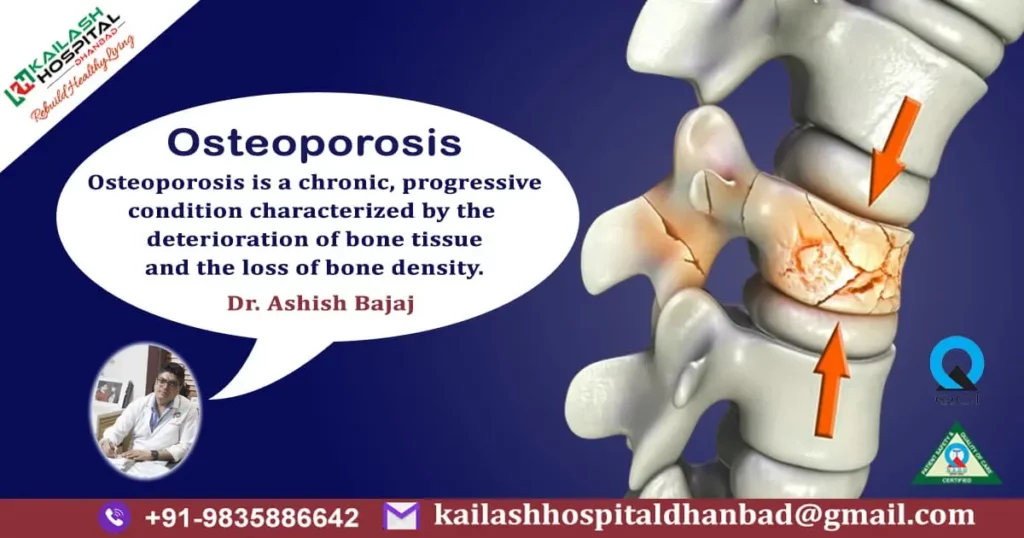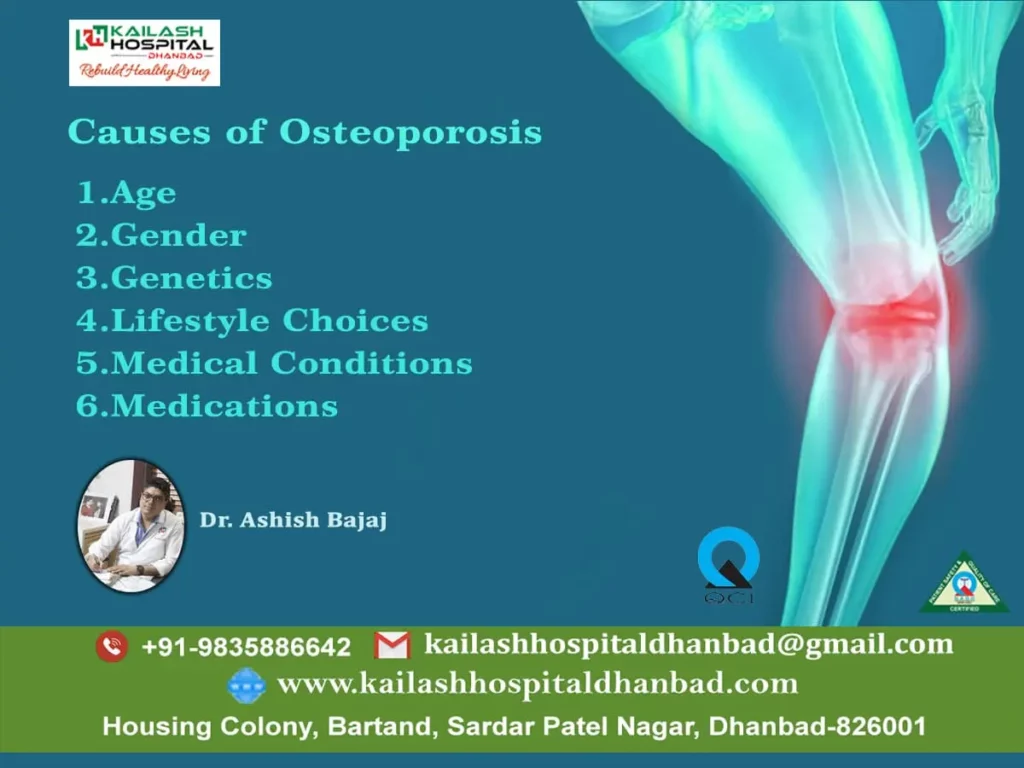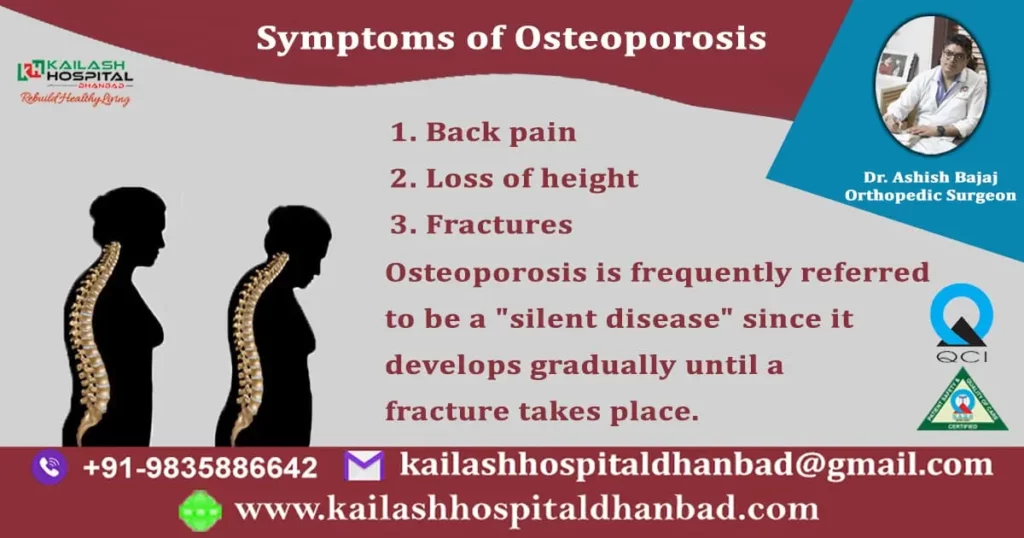
Table of Contents
Introduction of Osteoporosis
Osteoporosis, often referred to as the “silent disease,” is a common but often overlooked medical condition that affects millions of people worldwide. This bone disorder quietly weakens bones, making them brittle and prone to fractures, yet many individuals remain unaware of its presence until a fracture occurs.
In this blog post, we will delve into the world of osteoporosis, exploring its causes, risk factors, symptoms, and most importantly, how to prevent and manage it.
What Is Osteoporosis?
Osteoporosis is a chronic, progressive condition characterized by the deterioration of bone tissue and the loss of bone density. Bones are living tissues that constantly undergo a process of remodeling, where old bone is broken down and replaced with new bone.
In osteoporosis, this balance is disrupted, resulting in bones becoming porous, fragile, and more susceptible to fractures. These fractures often occur in the hip, spine, and wrist, and can have serious consequences for an individual’s overall health and quality of life.
Causes of Osteoporosis:
Osteoporosis is caused by a number of causes, including:

- Age: Osteoporosis is more common in older adults, as bone density naturally decreases with age.
- Gender: Women are at a higher risk of developing osteoporosis, especially after menopause when oestrogen levels decline.
- Genetics: Family history can play a significant role in determining an individual’s susceptibility to osteoporosis.
- Lifestyle Choices: A sedentary lifestyle, excessive alcohol consumption, smoking, and poor nutrition can increase the risk of osteoporosis.
- Medical Conditions: Certain medical conditions, such as rheumatoid arthritis, celiac disease, and hormonal disorders, can contribute to bone loss.
- Medications: Long-term use of medications like corticosteroids and some anticonvulsants can weaken bones.
Symptoms of Osteoporosis:
Osteoporosis is frequently referred to be a “silent disease” since it develops gradually until a fracture takes place. Common fractures associated with osteoporosis include hip fractures, vertebral fractures (leading to loss of height and a hunched posture), and wrist fractures. It’s crucial to be aware of these red flags:
- Back pain: Persistent, dull, or severe back pain could be indicative of vertebral fractures.
- Loss of height: Osteoporotic vertebral fractures can lead to a gradual loss of height over time.
- Fractures: If you experience fractures from minor falls or impacts, it may be a sign of weakened bones.

Prevention and Management:
While osteoporosis cannot always be prevented, there are several steps individuals can take to reduce their risk and manage the condition:
- Balanced Diet: Ensure you get enough calcium and vitamin D through diet or supplements. These nutrients are essential for healthy bones.
- Regular Exercise: Engage in weight-bearing exercises like walking, jogging, and resistance training to strengthen bones.
- Lifestyle Changes: Quit smoking, limit alcohol consumption, and maintain a healthy body weight.
- Medications: In some cases, healthcare providers may prescribe medications to slow bone loss and reduce fracture risk.
- Bone Density Testing: Regular bone density tests can help monitor your bone health and guide treatment decisions.
- Fall Prevention: Take precautions to prevent falls, such as removing hazards at home, using handrails, and wearing appropriate footwear.
Osteoporosis may be a silent threat, but it is a preventable and manageable one. By understanding the risk factors, recognising the warning signs, and adopting a bone-healthy lifestyle, individuals can take proactive steps to protect their bone health as they age.
In conclusion, while reversing osteoporosis to its original bone density might not be feasible, it is absolutely possible to slow down its progression and improve bone health with appropriate measures.
A combination of lifestyle changes, proper nutrition, exercise, and, in some cases, medication can help individuals with osteoporosis lead a more active and fulfilling life while reducing the risk of fractures and associated complications.
Remember, it’s never too late to start taking care of your bone health, and consulting with a healthcare professional or an orthopaedist is a crucial step in developing a personalised plan to manage osteoporosis effectively.
What are most common fractures for people who have osteoporosis ?
The most common fractures in people with osteoporosis occur in the spine fracture, hip fracture, wrist fracture and arm fracture.
Can osteoporosis occur at any age?
Osteoporosis can occur at any age, although the risk of developing the disease increases with age.
Why Osteoporosis is More Common in Women ?
Women are more likely to get osteoporosis because: Women’s bones are generally smaller, thinner, and less dense than men’s. Oestrogen, the bone-protecting hormone in women, begins to decline rapidly with the onset of menopause, leading to bone loss.
Does dehydration cause osteoporosis?
Water helps in transportation of vitamins and minerals to different parts of our body. Low water intake or dehydration causes disruption in this process which directly affects bone health and in the long run it cause low bone density and brittle bones.



